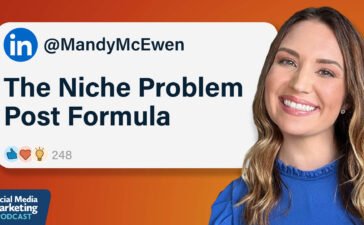Meta’s Implements New Requirements for Financial Services Ads in Australia

Meta’s rolling out new verification requirements for financial services ads in Australia, as it looks to combat the rise of “celeb-bait” scam ads, which use fake celebrity endorsements to lure unsuspecting victims.

As you can see in this example, celeb-bait scams illegally use the likenesses of big stars to promote their products, or dupe users into scams.
These types of scam ads, which you’ve no doubt seen yourself online, have become a significant problem, and now, under its updated agreement with Australian regulators, Meta’s taking more steps to address such for Australian users.
As reported by The Guardian:
“Beginning in early February, Meta will require advertisers seeking to run ads about financial services to verify information about the beneficiary and payer. Businesses will be required to provide their Australian financial services licence number or declare an exemption. Individuals will need to provide a government-issued ID.”
Meta describes the updates in more factual business terms:
“Beginning February 2025, ads covered by the Australia Online Scams Code, which includes ads promoting financial products or services to users in Australia, will need to adhere to Meta’s verification and on-ad disclaimer requirements before being published to Meta’s platform.”
Australia’s Online Scams Code has been signed by all the major online ad platforms, and includes a range of agreed measures to combat scams, and report scam activity in their apps.

These measures will now extend to official requirements for financial services providers in the region.
The updated requirements are similar to the same regulations that Meta’s already rolled out for financial ads in Taiwan and the U.K.
So why not roll them out for all regions?
Well, Meta is taking more measures to address celeb-bait scams, including the launch of new facial matching processes to help weed out these promotions.
But Meta’s not required by law to implement the same restrictions in all regions as yet. And as such, I’m guessing that Meta is happy to keep taking in as much ad revenue as it can, without the added regulatory restrictions that’ll slow the adoption of such ads.
That may be a cynical view, and maybe it really comes down to process and labor time, and the capacity to actually roll this out in all markets. But right now, it’s only an official requirement in these three regions.
As noted, Meta says that the new regulations will come into effect in Australia in February next year.
You Might Also Like
Successfully Deploying AI for Traditional Businesses
Finding it difficult to get AI to work in your business? Wondering how to avoid common mistakes that can derail...
Driving Qualified Leads With LinkedIn Content: A Proven Formula
Are you struggling to generate qualified leads from your LinkedIn content? Wondering how to transform your social media presence into...
AI Search: How to Get Recommended By AI
Are you struggling to understand how AI search works? Wondering how to position your business to get recommended by AI...
Entrepreneurial AI Pitfalls: Stop Making These 3 AI Mistakes
Are you struggling to introduce AI into your business while keeping your team engaged and productive? Wondering how to navigate...









